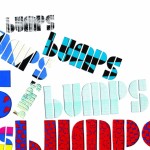Interview
XLR8R
August 2007
Link

Tortoise’s polyglot approach to music is grounded in the work of three percussionists–John McEntire, John Herndon, and Dan Bitney (a.k.a. Bumps)–who integrate elements of dub, funk, jazz, and numerous genres into the band’s instrumental compositions. But despite the wealth of side projects they’re involved in, they’ve never made a percussion album together… until now. After friendly prodding from Stones Throw’s general manager Egon, the drummers sat down and started messing around last year at McEntire’s Soma Studios in Chicago. The resulting 23 instrumental tracks on Bumps, the side-project’s eponymous release on Stones Throw (some of which have already been fed to remixers), are a wellspring of potential breaks that showcase the creative possibilities of three drum kits. We first asked Herndon for drumming advice, and his response boiled down to, “Ask John McEntire.” Wise words, as evidenced by these five tips from McEntire, a sound-engineering expert.
Experiment With The Basics
We didn’t use anything too weird, like tambourines, shakers, or whistles. As far as microphones go, I don’t really have any particular insights that would be beyond the realm of what anybody else would tell you. It’s all about experimentation. It all starts with the players and the instruments. You just need to tweak things to make it sound right in the room.
Lots of Post-Play
On Bumps, we used a lot of analog synth modules, frequency shifters, and phase shifters. There’s lots of distortion and
compression. You can hear all that stuff pretty clearly. We were definitely finding out new ways to distort things. We took the possibilities of the synthesizer module further, especially with the frequency shifting. One of those cuts was really interesting. We split it in stereo and ran it through two frequency shifters that drifted close to the same pitch.
Separate Is Not Equal
We had one kit isolated, which gave us a different palette of sounds–really dry, crunchy, and upfront. You actually have more processing possibilities with that because the resulting sounds are cleaner.
Crossover Hits
It’s hard to get things separated. There can be too much hi-hat bleeding into the snare mic, and sometimes you have to fight
balance problems. You can do more physical isolation, like putting the hi-hat further away or adding baffling. Nowadays, you can also use a program like SoundReplacer.
Ascending The Throne
On a couple cuts we recorded in the bathroom in the studio with just one mic. It turned out really nice. I’d used it as an echo chamber for some other things before. So we went in there with a kick drum, snare drum, and hi-hat and gave it a try.